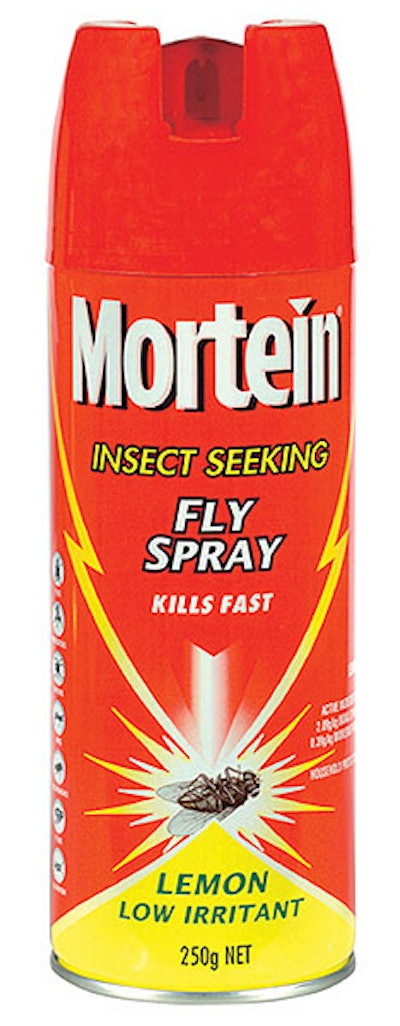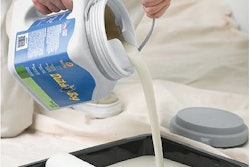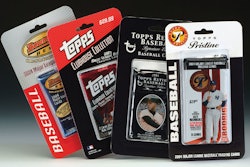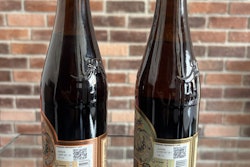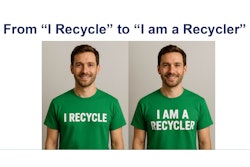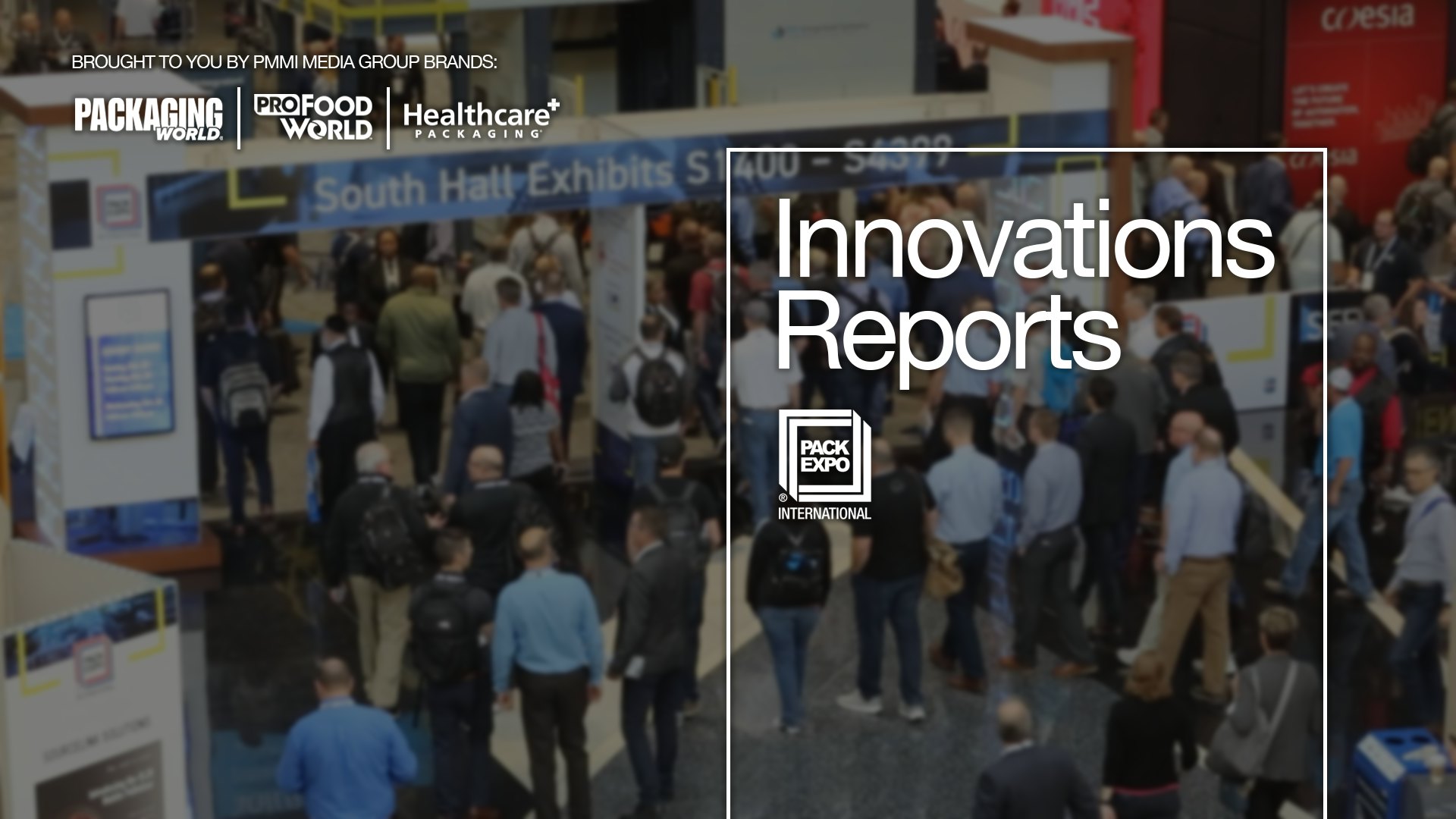What do talking pizza boxes, self-heating coffee packs, and electrostatically charged cosmetics have in common? All are examples of smart packaging, which is defined by industry expert Peter Harrop as “something that is more than simply using the package for its ages-old function of displaying a product, instructing you about it, and protecting it.”
As chairman of IDTechEx (Identification Technical Exchange), Harrop has been following smart packaging for the past six years and helped organize the first conference on the topic two years ago as well as last month’s conference in Orlando, FL. He says the term “smart packaging” has only come into popular use the past two years.
Harrop says that packaging is smart to the extent that it interacts with humans using mechanical, chemical, and electronic techniques. He calls this the “human interface,” and he believes there is tremendous pressure for an improved package/human interface via novel technologies. This need is perhaps greatest in the pharma category, but it extends across all consumer packaged goods.
The need is great in pharma largely due to the growing number of older consumers in society. Their physical limitations put them in a position where they sometimes need help in complying with a drug regimen. “Smart packaging will deliver the drug at the right time, or it will talk to a patient in a louder and louder voice to tell him to take the right amount,” says Harrop. “In other words, it will generally do what humans have done in the past.”
Rex the talking pill bottle from MediVox Rx is a good example (see www.packworld.com/go/c124). Another is Cerepak, which is an electronically-enhanced smart blister pack that aids patient compliance in clinical tests (see www.packworld.com/go/c125).
Pill bottles aren’t the only packages interfacing with humans these days. How about pizza boxes? Last fall, pizza boxes from Mangia Media spoke up for the first time. Mangia Media president Eric Cohen says that when the corrugated box is opened, a light-activated 1’’x2’’ pressure-sensitive voice chip delivers a 12- to 15-second message. Affixed to the lid’s underside near the hinge, the devices cost $2 each, paid for by Turner Broadcasting Service to promote its football programming. Thousands of the talking TBS boxes were delivered in 18 select markets nationwide.
“While this may seem a frivolous sort of smart packaging, it’s a sign of the times,” observes Harrop. “Besides, some things debut as a bit of a lark, then find more serious applications later on.”
Brand enhancement
Harrop sees enormous potential for smart packaging in brand enhancement. What better way to separate one’s product from the pack? A good example, he says, are “widgets,” the pressurized capsules in beer cans that release nitrogen-induced microbubbles when the can is opened. The bubbles create a head of foam to mimic freshly poured draft brew. “The device is heavily patented, so supermarkets can’t easily ‘rip it off,’” Harrop notes. “It has done wonders for sales of Diageo’s Guinness Irish Stout, among other brews. A widget has even been used in children’s sodas.”
Another type of brand enhancement is for self-heating or self-chilling containers. The most recent example of the former is OnTech Delaware’s new self-heating single-serve coffee container (see photo p.68).
Harrop says self-heating containers have already met with some success, mainly because the basic technology is relatively simple. He adds that there are larger challenges in self-cooling containers, which are akin to small, pressurized refrigerators. But if a few technology hurdles can be overcome, says Harrop, self-chilling containers will be a huge market.
While examples are rare, we did uncover the self-cooling 5-L keg that Kirin Brewery of Japan tested in mid-2003 and was planning to introduce in 2004. It employs a double-walled, low-pressure design. When released, water contained within the low-pressure outer chamber begins to evaporate, thus providing the chilling effect. The keg takes 90 minutes for the beer—contained within the inner chamber—to be chilled down to a frosty 45ºF and will hold this temperature for up to 12 hours.
“The technical challenge for both self-heating and self-chilling containers is that on very hot or very cold days, they don’t necessarily heat or chill to the right temperature,” Harrop says.
Brand protection
It isn’t just brand enhancement that stands to benefit from smart packaging. Brand protection can be improved too, especially in the area of anticounterfeiting. “Counterfeiting instances, as reported by the FDA, have risen dramatically since 2000,” says Renard Jackson, vice president for sales and business development of the packaging services unit of Cardinal Health. Based in Dublin, OH, this $65 billion manufacturer and contract packager is deploying anticounterfeiting weaponry that encompasses the following methods:
Overt—can be determined without tools
Covert—requires an aid of some sort
Forensic—lab work needed
“For example, overt would be distinctive fibers in the paper that can be seen visually,” Jackson says. “Covert can mean fibers visible only using a specific light source, or via quick-and-easy chemical tests such as with alcohol.” Forensic includes “markers” detected only by lab analysis.
Jackson breaks down anticounterfeiting into two groups: authentication and track-and-trace. He says authentication methods include secure paper substrates, secure inks, and optical variable devices (OVD) such as holograms and thermographic materials, which change colors in response to temperature changes. Nano text is another authentication tool. At the microscopic level, it is a covert tool. Authentic products would have nano text in a prescribed location on the package that could be checked.
On the track-and trace side, Cardinal offers a serialized bar code using a reduced space symbology (RSS) technology. Jackson sees RSS as a complementary technology to RFID.
“It brings serialization to the table, and is true track-and-trace just as RFID except that it costs less and must be line-of-sight scanning,” he says. “Numerous customers are looking at it even as we build operational capability to handle it.” He says that RSS is economical enough to provide item-level “tagging.”
Electri‘flying’ improvements
While RFID is one of the hottest technologies in the electronics side of smart packaging, other marvels of electronics are out there, too. In one application, that’s bad news for flies.
UK-based household products giant Reckitt Benckiser has introduced a line of aerosols that fight flying insects. Sold under the Smartseeker and Mortein brands, these products are electrostatically charged by the package as they are dispensed. Pressing the actuator causes an electric crystal to generate a little electricity—akin to static electricity—that charges the particles. The charged droplets are said to alight to the target more rapidly and efficiently because of a voltage difference. The spray also exhibits “wraparound” capabilities as well, to better seek out bugs behind piping. And since there’s less waste, the products are more environmentally friendly, Harrop points out.
On the cosmetics side, there’s Procter & Gamble’s SK-11 Air Touch Foundation spray, which was introduced into UK markets in 2003 after its debut in Japan. A product Web site states that it “uses ionization technology to apply individual foundation particles, invisible to the naked eye, perfectly to the skin.”
Air Touch Foundation also sells in Japan and other markets outside the U.S. for the equivalent of $200, according to Harrop. It uses 2 AA batteries that yield a low-current charge that helps make the foundation cream go unusually evenly across the face and not in eyebrows or hair, Harrop says.
More smarts
One final group of smart packaging technologies that Harrop believes holds some potential is a category that is largely diagnostic in nature. Materials that change chemically or electronically, for example, could signal a problem. Concerns about bioterrorism are helping drive development in this area, Harrop says.
“These include responsive inks that might be called ‘magic’ inks,” he says. “In development at universities, these inks can show colors or show words like “Anthrax, Keep back!” On a beefburger, they might show “E. coli—I can kill you.”
Besides flagging the presence of pathogens or compounds that can otherwise not be easily detected by consumers, Harrop believes such technologies can also detect the presence of genetically modified foods, too.
Interest and growth in environmental smart packaging is evident, though Harrop admits this segment is not as strong as the others. One particular environmental smarts is especially “a-maize-ing.”
Witness the snowballing effect of environmentally friendly packaging made from renewable resources, such as corn-derived polylactide, PLA. In fact, PW’s cover story last month highlighted bottled water from BIOTA Brands of America, which were introduced in fall 2004, the first in the world blow molded of PLA. That was followed by Naturally Iowa’s January 2005 debut in three major Midwest markets of milk in bottles blow-molded of PLA.
Harrop describes an effort by Arla Foods in Denmark, Europe’s largest dairy, to combine smart package shelf life extending technology with an environmentally friendly angle. Arla is using mustard oil, which is antibacterial, in PLA film wraps as a natural way to protect and preserve cheese.
As technology available to packagers gets smarter, so too must the managers that adapt them. That’s where the real smarts are these days.
See sidebar to this article: Smart packaging for Rx and cosmetics
